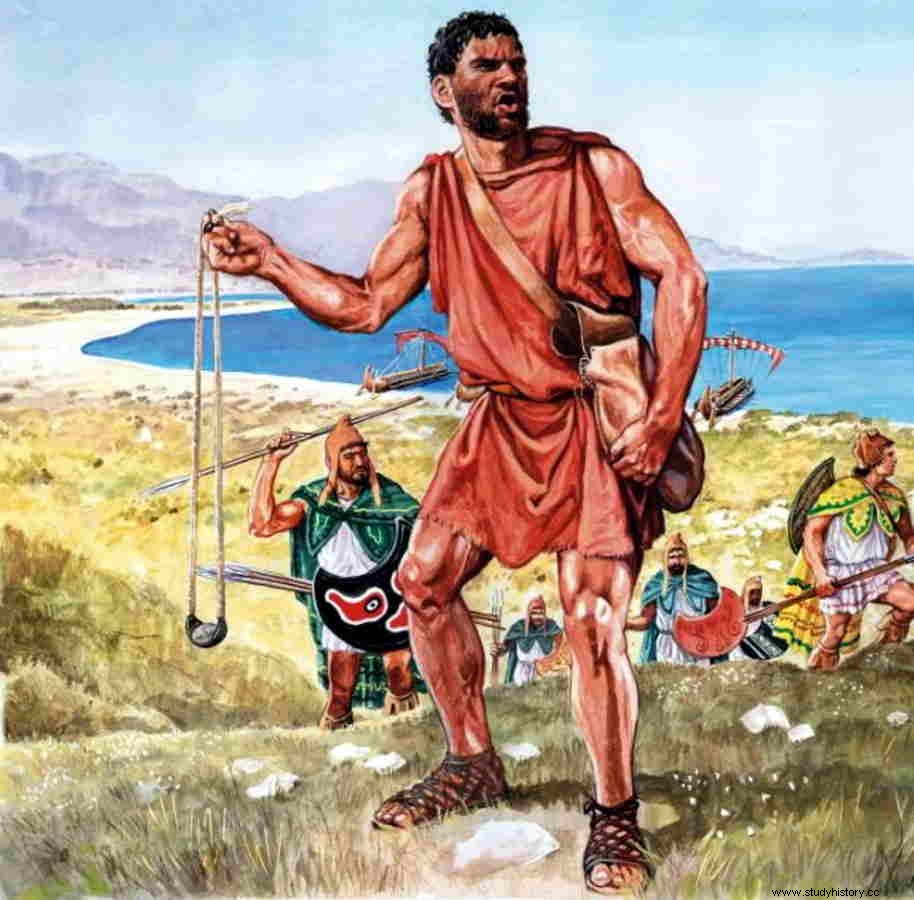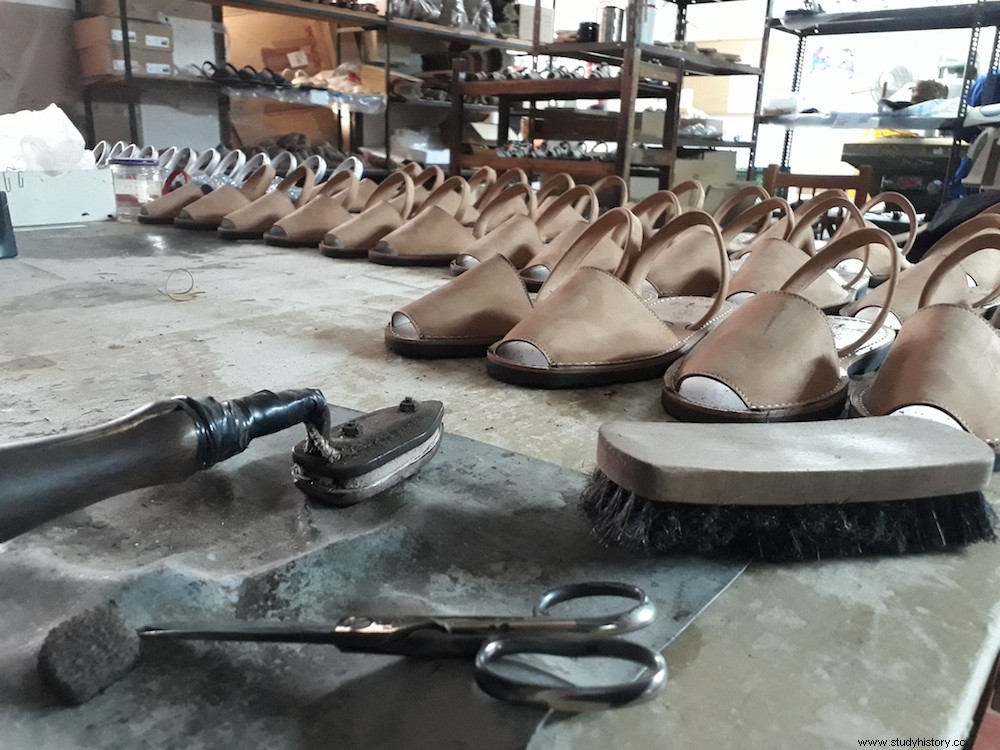A battle as a stage in the middle of Antiquity. Hannibal and his Hispanic troops face thousands of Roman warriors eager to fight. And in the first line of battle on the side of the Carthaginian general, a large group of Balearic slingers, who threw stones with their slings with which “they surpassed all other men ”, as the Greek historian Diodorus Siculus wrote , and who walked firmly with their abarcas . That's how it is. The padded shoe that has been in fashion for a long time in the hot summers of half the world for its comfort and coolness already served as a support for the classic Balearic fighters to fulfill their mission, safeguarding their stability on the battlefield.

In the last two centuries, Menorcan footwear has been the most satisfactory source of income and work for the island until the arrival of tourism, a sector with which it shares a place at the economic table. With a wide variety of feet to wear:from the so-called 'mayonnaise shoes', dark in color with a silver buckle, which were sold in the 18th century in the same workshops where they were made to people of good lineage who were looking for their elegance, even the shoes with which the artisans continued to dress the numerous military garrisons that arrived with the English and French dominations.
The truth is that craftsmanship has always been present in Menorcan footwear. And if not, tell the sandals or Menorcan sandals, which passed through the expert hands of a tanner, a baker, a shoemaker and a sewer, trades that today are the heritage of our culture. These were then rustic sandals, made with tanned cowhide and to which, with the entry into the 20th century and the arrival of modern technology and the demand from countries to which they were already beginning to export, such as Cuba, the material ingredient that has made them recognizable and essential for many until now:rubber. By reinforcing its sole, this rubber increased the shoe's strength, flexibility and non-slip capacity, which made Balearic farmers and peasants continue to use it, since they could protect their feet from moisture during long and exhausting days in the field.
With the passing of the 20th century, footwear production became more technical, although it was still a product of farm workers and lower classes. At that time the poet Miguel Hernández wrote one of the poems that best testify to its humble use:
For the fifth of January,
every January I put
my goatherd shoes
on the cold window.And I found the days
that break down doors,
my sandals empty,
my sandals deserted.I never had shoes,
or suits, or words:
I always had streams,
always sorrows and goats.Poverty dressed me,
the river licked my body
and from foot to head
I was dew grass.By the fifth of January,
by the sixth, I wanted
the whole world to be
a toy store.And as dawn breaks
removing the orchards,
my sandals with nothing,
my sandals deserted.No crowned king
had a foot, had the desire
to see the footwear
from my poor window.All throne people,
all boot people
laughed bitterly
at my broken sandals.Crying furiously, until
cover my skin with salt,
for a world of pasta
and some men of honey.Around the fifth of January
from my sheepfold
my goatherd shoes
to the frost I came out.And around six, my gazes
found at their doors
my icy sandals,
my desert sandals.
In the second half of the century, the commitment to quality and design became the battle horse of its commercialization, as well as the conservation of its powerful craft component, which resulted in the hand-braiding of the skins of some female models. high class. Also the origin of the rubber used:recycled tire wheels. A sustainable and responsible practice with the environment that few sandals companies today maintain due to the costs involved. In fact, the only Spanish one is MMARTINYCA, promoted by Lanzadera. The experience, commitment and dynamism of the manufacturers of sandals have also led them to dedicate their efforts to exhibiting Menorcan footwear at the most prestigious fairs in the world. Like those of Japan, Germany, New Zealand or Dubai, where they have been very interested in the product in recent years, eager for an exotic product that is different from what they find every day in their closest stores.

Some sandals that are holding up very well over the years, thanks to the improvement of their structure:those made entirely of leather, with sole, instep and heel strap in leather and sewn by hand with waxed thread to the current ones with rubber tire wheel (recycled or not) and in all colors. In fact, the old Balearic slingers would be very surprised at the remarkable evolution that this shoe has undergone, but what they would surely appreciate would be the improvement in comfort and durability to withstand the intense days of fighting from sunrise to sunset.
Sponsored article.
